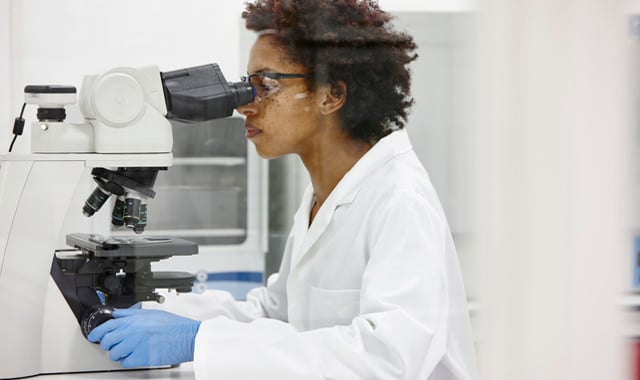Finding the Middle Ground Between Research & Development

Has the medical device industry lost its research mojo?
The industry spends billions on research and product development every year, and these investments are only increasing. The leading medical device companies reinvest 6% to 12% of revenues into R&D, with the top 10 companies spending $10.5 billion on R&D in 2013. However, the majority of medical device research goes towards incremental improvements in product design or function rather than into truly revolutionary new products.
Revolutionary medical devices – those that upend market expectations or launch a whole new device category – are often built on new scientific discoveries or technological advances made in entirely different fields. To increase innovation in medical devices, we need to do a better job of translating academic research into commercial solutions. As technologies in one area advance, they will combine with other technologies to enable entirely new capabilities. The medical device industry will need to take a broader view of R&D to remain innovative.
The Three Legs of Medical Device R&D
There are a lot of different players in medical device research and development, but most of them will fall into one of three categories. Each of these organization types has its own set of priorities, strengths and weaknesses when it comes to R&D.
Academic Institutions
Universities are strongly motivated to attract and retain talent who will enhance their reputation as a teaching and research facility and help them attract students and research grants. In large research universities, faculty and grad students are given broad leeway in the research they want to pursue. Commercial applications of the resulting discoveries are not usually a high priority. This makes research universities excellent centers for basic and early-stage research. Because researchers are funded by grants and are not held accountable to achieving a return on investment for their efforts, they are free to pursue avenues of inquiry that may seem highly removed from any immediate useful application. In fact, they may not have the capacity to commercialize their findings even when a discovery does have commercial potential.
Commercial Companies
Within the medical device market, the commercial sector includes Fortune 500 organizations and tiny biotech startups. All of these companies share a common goal: to make a profit. While many companies can and do reinvest profits into independent, internally-funded research, they need this research to generate results that can be commercialized within a relatively predictable timeframe. Unlike universities, they cannot afford to pursue interesting research questions that have a low probability of resulting in a financial return. Commercial companies are most likely to engage in late-stage development rather than pure research. Their R&D activities are generally focused on development of a new product or improvement of an existing product to meet a specific market need.
Contract Research Organizations
Contract research organizations fill an important role in the medical device development space. They give commercial companies access to scientific and technical expertise and specialized equipment and facilities that would be cost prohibitive for most commercial companies to host in-house. By engaging with a CRO, commercial companies can vastly expand their R&D capacity and shorten development timelines. Many CROs strictly act as “labs for hire,” performing specific, limited activities needed for product development or registration. Some large independent research institutions, like Battelle, do both contract research for commercial companies and independent or grant-funded basic and early-stage research. This allows them to act as much needed “connectors” between basic scientific discovery and commercial application.
The Disconnect Between Academic and Commercial Research
All three types of research are sorely needed in the industry. Too often there is a disconnect between discoveries made on the academic side and application of those discoveries to solve real-world problems.
Building better connections between basic and applied research could accelerate the translation of discovery into product development.
Building a Bridge Between Basic and Applied Research
To speed up translation, we need to build stronger connections between basic and applied research and across scientific disciplines. Independent research institutions like Battelle are well positioned to help bridge this gap.
For example, Battelle researchers were working on a chemical resistant coating for the U.S. military to protect soldiers and equipment from chemical weapons. Researchers later realized that tweaking the formulation for the coating could result in an antimicrobial coating that could have applications in the medical device field. There are many opportunities like this to translate discoveries in one field or industry into applications in another. However, to make this happen, we need organizations with the capacity and incentives to find them.
There is no shortage of research happening in the medical device field today. Healthy investment continues in both academic institutions and commercial organizations. Where we need more focus is the middle ground that connects the two. It is this middle space where there is the most immediate and fruitful opportunities for groundbreaking medical device development.
David J. Giles is a Senior Market Manager at Battelle.
BATTELLE UPDATES
Receive updates from Battelle for an all-access pass to the incredible work of Battelle researchers.